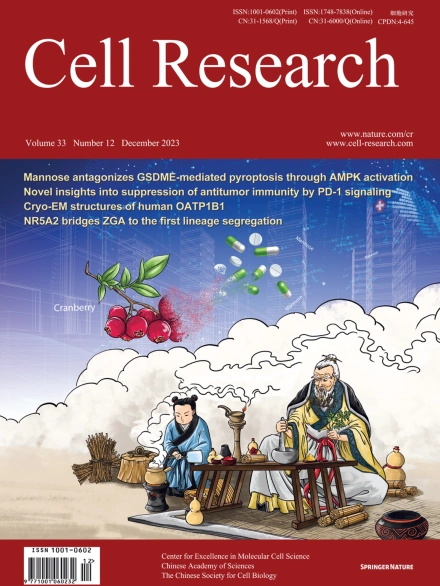
Advanced Search
Submit Manuscript
Advanced Search
Submit Manuscript
Volume 33, No 12, Dec 2023
ISSN: 1001-0602
EISSN: 1748-7838 2018
impact factor 17.848*
(Clarivate Analytics, 2019)
Volume 33 Issue 12, December 2023: 971-974 |
Structural basis for nucleosome binding and catalysis by the yeast Rpd3S/HDAC holoenzyme
Yueyue Zhang1,† , Mengxue Xu1,† , Po Wang1 , Jiahui Zhou1 , Guangxian Wang1 , Shuailong Han1 , Gang Cai1,2,* , Xuejuan Wang1,2,*
1The First Affiliated Hospital of USTC, MOE Key Laboratory for Cellular Dynamics, Division of Life Sciences and Medicine, University of Science and Technology of China, Hefei, Anhui, ChinaDear Editor,
Histone deacetylases (HDACs) are evolutionally conserved enzymes that remove acetyl modifications from histones and play a central role in epigenetic gene silencing.1 Class I HDACs are promising targets for epigenetic therapies for a range of diseases such as cancers, inflammations, infections, and neurological diseases.2 Yeast Rpd3 is the founding member of class I HDACs, which forms two distinct complexes: the ∼1.2 MDa Rpd3L deacetylating histones at promoter regions, and the ∼0.6 MDa Rpd3S targeting transcribed regions to suppress intragenic transcription initiation.3,4 Rpd3S consists of three core proteins: Rpd3, Sin3, and Ume15 along with two dedicated chromatin binding subunits: Eaf3 and Rco1.6 The structures of the yeast Rpd3S complex and its human homolog Sin3B complex have been recently reported.7,8 Here, we report the cryo-electron microscopy (cryo-EM) structure of the Rpd3S holoenzyme binding a nucleosome at 3.7 Å resolution (Supplementary information, Table S1). The structure illuminates an intact H3 tail (1–24 aa) binding to the Rpd3S complex in a catalysis-competent conformation, with the H3K18 residue poised for catalysis.
https://doi.org/10.1038/s41422-023-00884-2